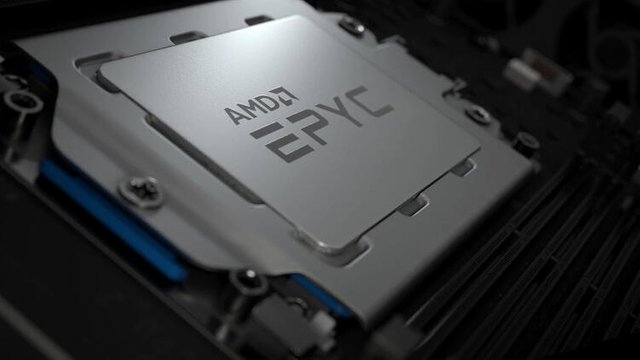
The TOP500 list of the world's 500 fastest supercomputers announced every two years includes the world's seventh fastest supercomputer and AMD's EPYC processor in the top 50.
#AMD While EPYC processors support advanced scientific and medical research with new systems at Indiana University, Purdue University and CERN, it is also used in #HPC cloud-based systems for #Amazon Web Services, #Google and #Oracle #Cloud.
To empower Frontier and El Capitan, the world's fastest supercomputers, to support workloads in the cloud, and steer new developments in medical research, the high core count and memory bandwidth of AMD EPYC processors are meeting the growing need.
Four supercomputers powered by AMD EPYC are among the 50 highest performing systems in the world, and in the TOP500 list there are ten AMD EPYC powered supercomputers in total:
#Selene (# 7): An AMD EPYC 7742 based system on Nvidia's DGX A100 SuperPOD platform
#Belenos (# 30), National of France Meteorology One of the two BullSquana XH2000 supercomputers with service at Météo-France is powered by 2nd generation AMD EPYC processors
#Joliot-Curie (# 34) , France National High Performance Computing Organization GENCI's BullSquana XH2000 system using 2nd generation AMD EPYC processors
#Mah T (# 48) , 2nd generation Science Information Technology Center in Finland, which is powered by AMD processors Epyck bullsqu until XH2000 supercomputer
Two universities have announced the study of supercomputers powered by Dell EMC PowerEdge servers with AMD EPYC processors.
Indiana University will use eight-petaflop Jetstream 2, a distributed cloud computing system powered by 3rd generation AMD EPYC processors. This system will be used by researchers in different areas such as Artificial intelligence, social sciences and COVID-19 research. AMD EPYC processors are also strengthening the Big Red 200 system on the Indiana University campus.
Purdue University will start using supercomputer Anvil powered by next generation AMD EPYC processors. This supercomputer will be powered by next-generation AMD EPYC processors that support many different areas such as computational and data-intensive research.
In addition, CERN, the world's largest particle physics lab, chose 2nd generation AMD EPYC processors to use the Gigabyte servers that process huge amounts of data from the Large Hadron Collider (LHC) experiment. The AMD EPYC 7742 processor's 64 cores, DDR4 memory speed, and increased bandwidth of PCIe 4.0 are used to collect 40 terabytes of collision data generated every second at the LHC.
While the HPC industry is changing to meet the needs of new types of workloads, cloud providers continue to choose 2nd generation AMD EPYC processors to provide leading performance and flexible solutions. With technology partners like Amazon Web Services, Google Cloud, and OracleCloud, AMD helps industry leaders push the boundaries of HPC and cloud computing.
AMD and Microsoft Azure continue to expand their partnership in the cloud with HBv2-Series virtual machines developed for high performance workloads. 2nd generation AMD EPYC processors offer Microsoft Azure customers fascinating core scaling, access to massive memory bandwidth, and the industry's first x86 server processor to support PCIe 4.0, delivering the best high performance experience. AMD and Microsoft Azure will continue to support real-world HPC workloads such as CFD, open finite element analysis, seismic processing, reservoir modeling, rendering and weather simulation.